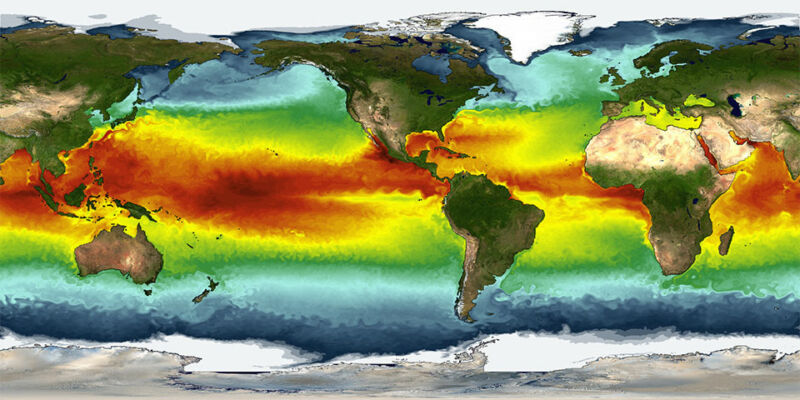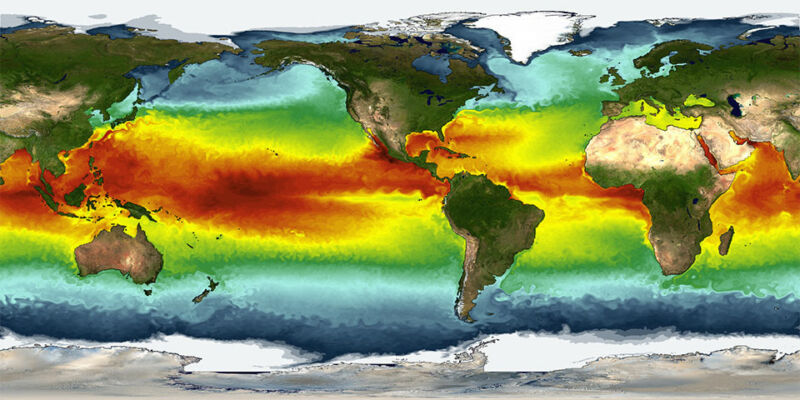
Enlarge (credit: https://oceanservice.noaa.gov/facts/sea-surface-temperature.html )
Someday, humans will get it together and dramatically reduce greenhouse gas emissions. But—not to fact check your daydreams too strictly here—how exactly will global temperatures respond to that day? This is a question climate science has long worked to answer, although devils in the details have led to some confusion.
A new study led by Nanjing University’s Chen Zhou tracks down another devil and puts it on display. Research has increasingly shown that it’s not just the planet’s average surface temperature that matters for tracking warming, but the spatial pattern of those temperatures. That can be important for calculating things like the climate’s sensitivity to greenhouse gases, but it hasn’t been accounted for in some methods of estimating how emissions cuts affect warming.
Seeing a pattern
This “pattern effect” of warming in different areas of the globe influences the way the planet sheds heat back to space. For example, if warming is a little stronger in the western equatorial Pacific Ocean—which it has been—that region is better at producing sunlight-reflecting cloud cover and releasing heat upward. If you assume the warming is occurring evenly around the world, you will miss that slightly offsetting behavior.





